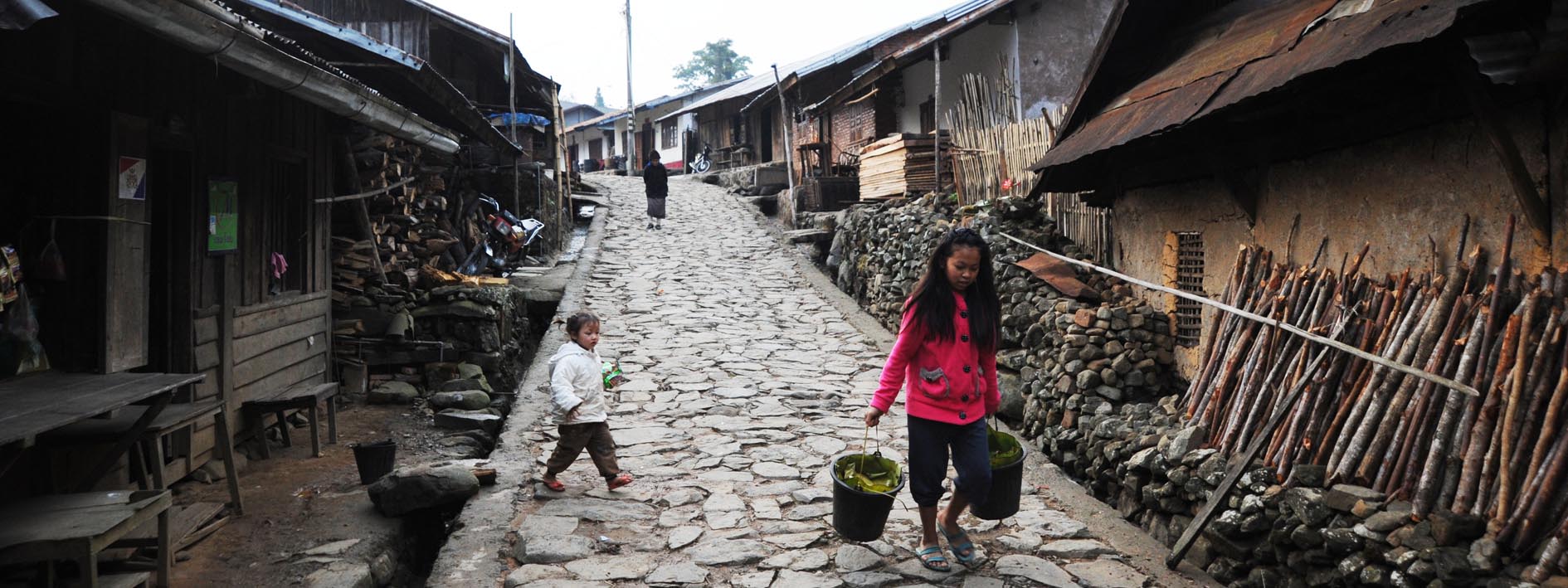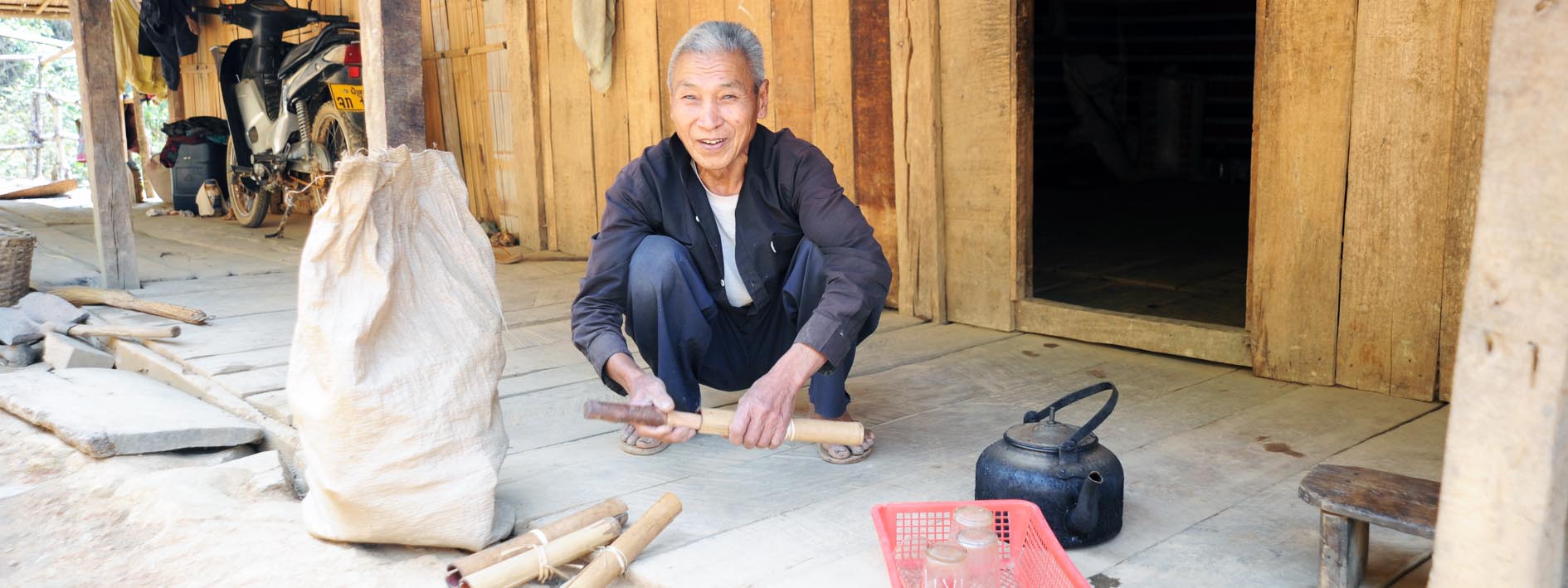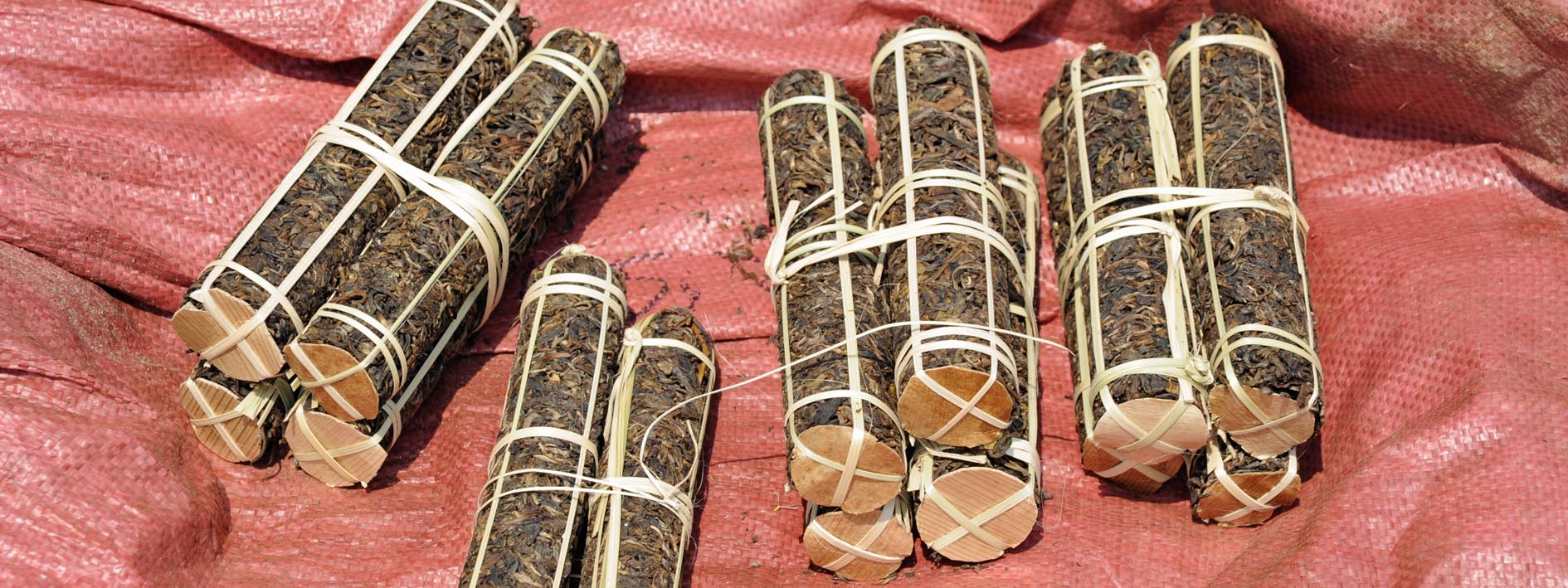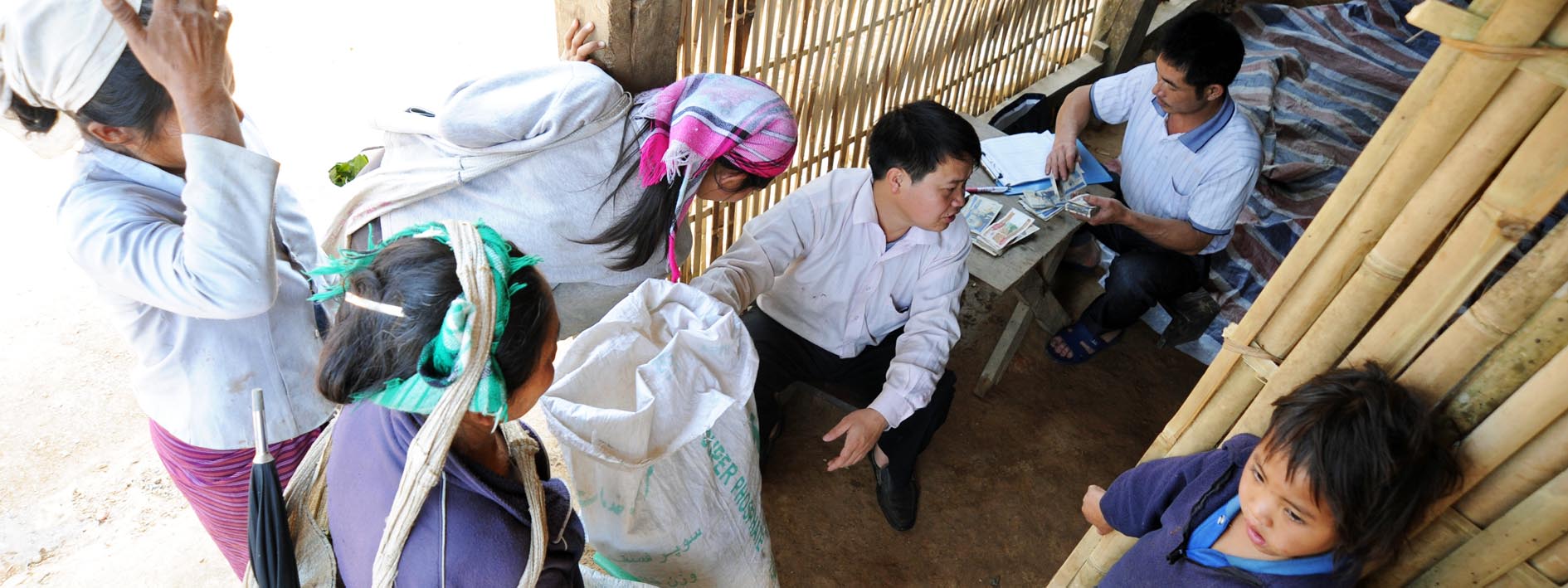
Phongsaly is the “password” to the most unique tea from Laos.
Most of tea produced in Laos is basic green tea mostly produced in the southern part of the country.
In the northern parts of Laos near the Chinese border in the altitude over 1.500 meters little town Phongsaly is spread on the mountain slopes.
Road to Phongsaly leads through many villages where people live very natural way.
It is very interesting to meet local women dressed in the traditional costumes.
Phongsaly has unique historical feeling.
Thanks to the developing programs traditional poppy fields are replaced with tea gardens.
The large amount of tea produced in this area is Mao Cha. Basic material for green or dark Puer manufacturing is exported to China.
Green leaves for Mao Cha are pan fired in rollers after sun drying.
In the little village Ban Komen Kao one hour drive from Phogsaly traditional way of hand making and preserving tea is retained for generations.
Broad-leaved tea tree variety arbors surrounded dusty road for hundreds years.
Fresh tea leaves are sun withered, pan fired and sun dried.
Ready loose leaf tea is steamed and stuffed in bamboo stalkes for additional drying.
Tea is removed from bamboo “halves” stalks nad tied with bamboo strips to hold shape and for transport. Local tribes trade this tea on Phonsaly market.
Smoky tea is the only product local tribes used to produce and exchange for food and various tools for farming.
Nowadays local tribes sell fresh tea leaves directly to Chinese tea traders who use them for Mao Cha production. It is not the secret that Puer tea made of tea leaves from Phongsaly taste better than Puer from Xishuangbanna region in China.














